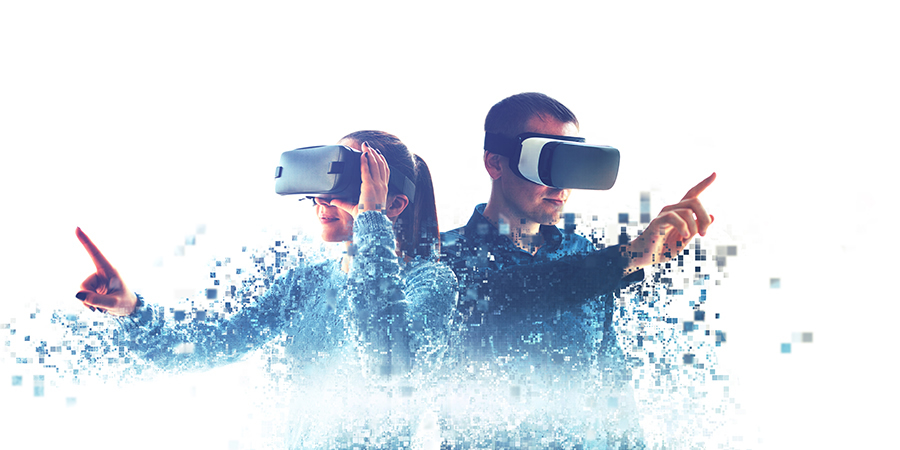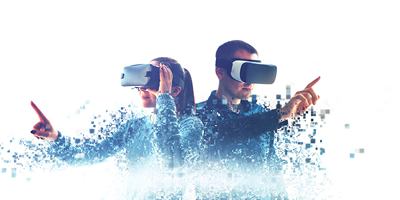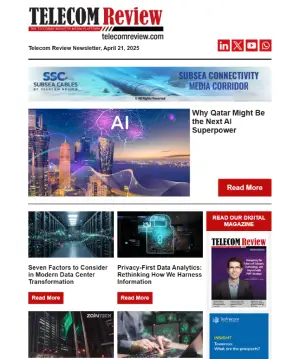
The landscape of post-pandemic education will look very different. The advent of 5G and the types of technologies that it will enable, coupled with the pandemic and the realization of the need for and the use of technologies such as AR and VR, are set to make way for a more advanced and tech-centric educational landscape.
The market
AR/VR used to be viewed as a luxury or a sort of novel escapism due to the entertainment industry; however, the possibilities of its applicability have expanded exponentially in recent years.
Recent research suggests that the augmented reality (AR) and virtual reality (VR) are expected to change the entire landscape of the ways in which we interact with one another, namely when it comes to business operations. These emerging technologies have not been adopted on a larger scale yet because the mass-adoption factor proved to be particularly challenging for many businesses.
However, Statista forecasted that the global market for AR/VR is expected to be worth $209 billion by 2022.
COVID-19 as a catalyst to a forever-changed education ecosystem
At the very beginning of the COVID-19 outbreak, many countries across the world forced their residents into lockdown which meant that businesses of all sorts had to make a shift into the virtual space in order to survive the crisis which would have undoubtedly had a taxing effect on the economy. A few months down the line, many sectors have begun to realize that this forced digital transformation, which was adopted to ensure business continuity and relevance in an economy characterized by immense and unprecedented disruption, was actually more of a blessing than a curse.
Many emerging tech use cases have been available to the education sector over the past half-decade; however, with it being a legacy industry, digital transformation was somewhat of a challenge to initiate.
Over the past few months, schools across the world have taken to using video conferencing platforms such as Google Hangouts, Zoom and Microsoft Teams to ensure continuity. However, with the sheer volume of classes taking place online, it is no doubt that teachers and students alike are beginning to experience ‘fatigue’. Indeed, schools offer a very important factor when it comes to education, apart from the actual educational aspect of schools, the social aspect is key to a child’s life as well as their development.
The presence and agency that you would normally experience in a real-life classroom are absent in the online space especially when the only technologies that are being used are video conferencing platforms. AR/VR can change that.
A new era of education
A new era of education and communication is on the horizon. Many startups specializing in AR/VR have recognized this and, as a result, capitalized on it in order to accommodate to the increased fatigue and lack of social interaction.
This, coupled with the advent of 5G (slowly but surely) coming into fruition, has made way for the adoption of this technology to excel. The opportunities that immersive technologies could unlock are unfathomable.
There has been a great deal of speculation around the ides of ‘rockstar’ teachers. This refers to the idea of prominent figures becoming more accessible in the field of education such as Nobel Prize winners and world-renowned experts.
As Steve Brambury, director of digital inception consulting, put it, “One day your children could be doing classes with a Nobel Prize winner who lives on the other side of the world, using virtual spaces as the medium.”
Adding that, “In the morning your child will be doing science with one of the world’s foremost physicists before a class with a Nobel laureate for literature in the afternoon. This will create a brand of rockstar teachers and the demand for the best of the best will rise because a shift toward VR will see geographical borders in education dissipate.”
He also went as far as to say that VR tech adoption in education will become the norm by 2025.
Applying VR to education poses a wide range of key benefits. Some of these benefits include the ability to transport them to a historical or cultural event that is located in another country, for instance, where they can be educated and engaged with virtual surroundings in real-time. This is a unique way of consolidating engagement and interest within the classroom.
Aside from this and the obvious idea of incorporating VR into video conferencing for classrooms, many startups have come up with even more innovative ideas.
For instance, a subscription-based app, 4D Anatomy, was created to enable students and teachers to explore the human anatomy in a 4D interactive experience. This app allows them to control the navigation and learning based on anatomy via any screen. Similarly, Curiscope, which was previously founded in 2016, uses AR and VR technology to make Science classes a great deal more engaging by allowing students to learn more about the human body.
Wild Eyes, a startup that has also developed a VR/AR product for education, has created an immersive experience to mimic school fieldtrips. They use virtual reality to create interactive lessons which enable to viewer to have a realistic depiction of lessons that they are learning for subjects like Earth Sciences, Physics and Biology. They capture natural habitats in 360-degrees which can be viewed through Google’s Cardboard VR headset to keep students entertained and engaged whilst learning.
These are just a few of examples of the products that are available regarding immersive education.
Why schools should adopt AR/VR
There are a variety of reasons why classrooms of the future should implement these technologies.
Firstly, it has been speculated and proven that repetition typically helps the human brain learn when it comes to reading. We also learn faster through experience. It was found that through experience, the human rain retains 90% of the information rather than 10% which is typically the amount we retain via reading. Having said that, our greatest shot at improving the quality of education in terms of the retention of information is to resort to AR/VR.
Secondly, it is important to consider the current context of education and society. Undoubtedly, our attention spans have decreased (arguably) due to the ubiquitous smartphone, hence, making the battle to retain a student’s attention all the more challenging. Adopting immersive technologies in education would mean that students would require a headset to be worn around their eyes. This means that they will automatically be more engaged and less likely to check their smartphones.







